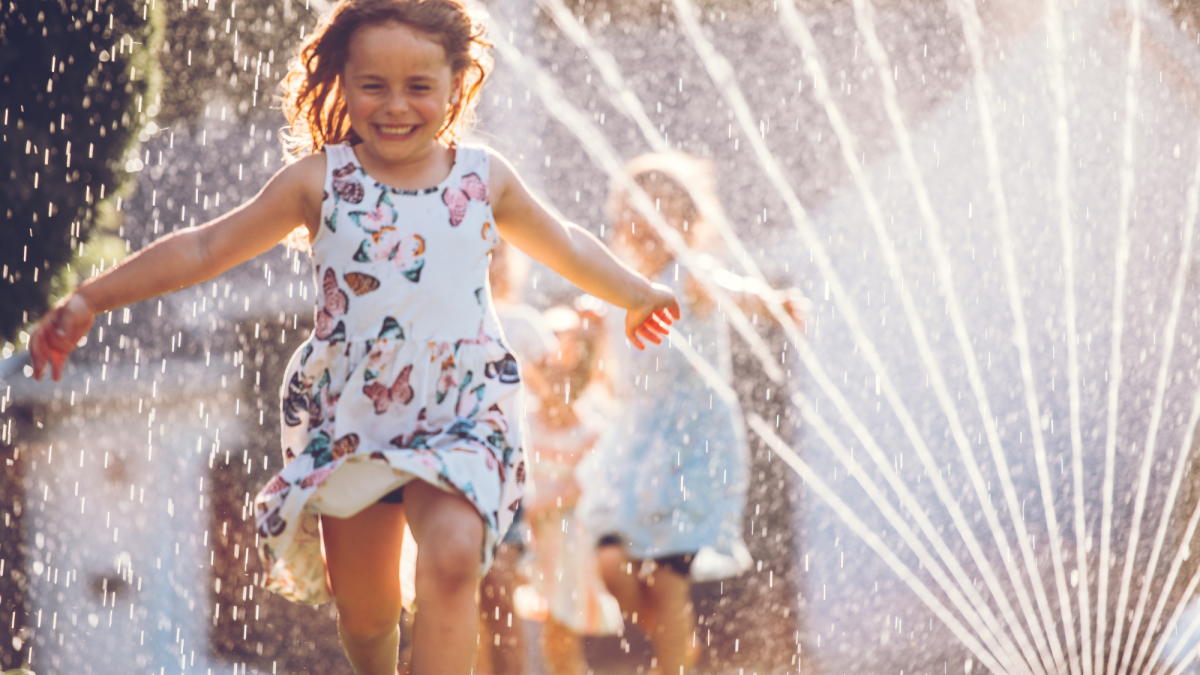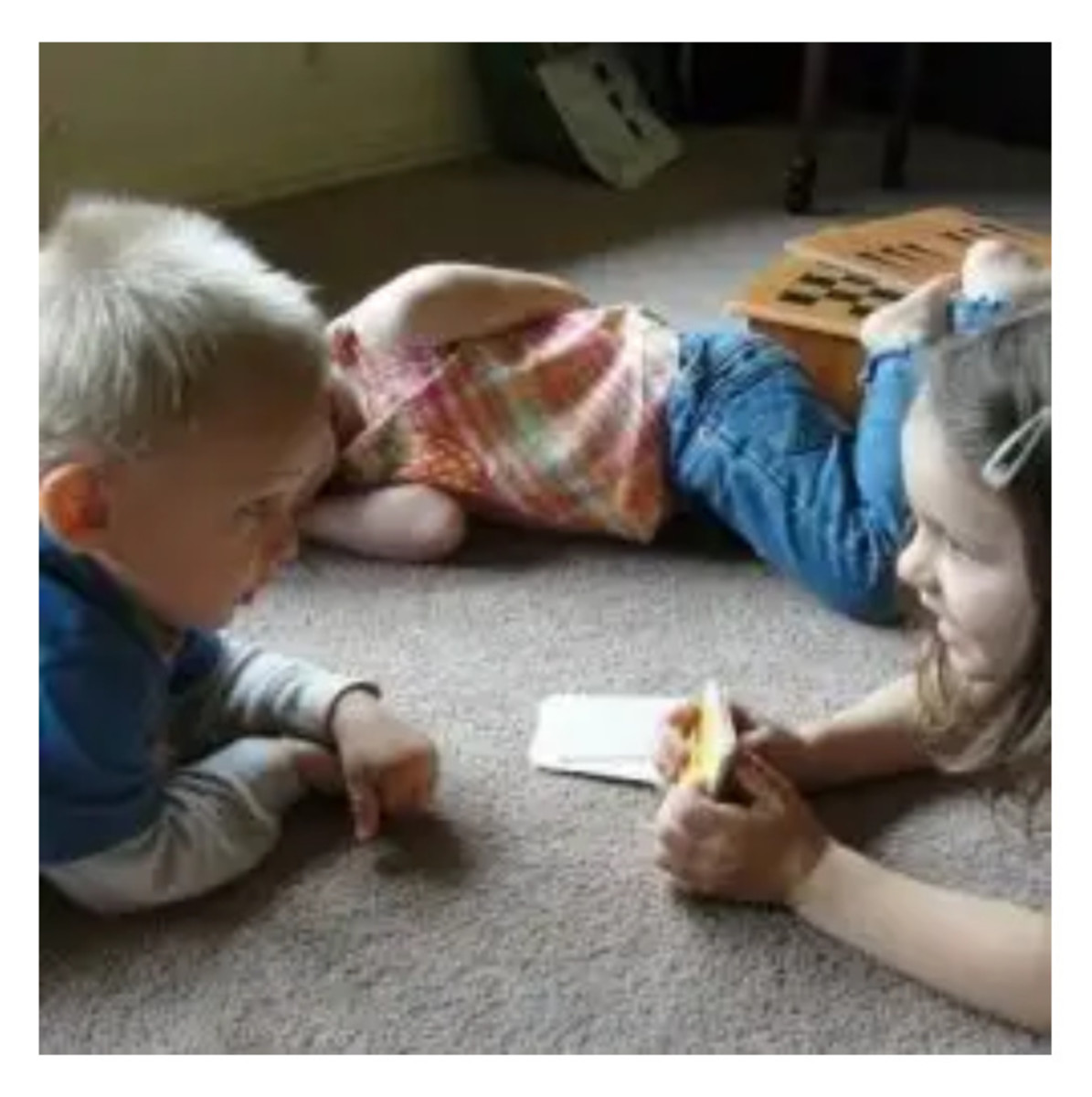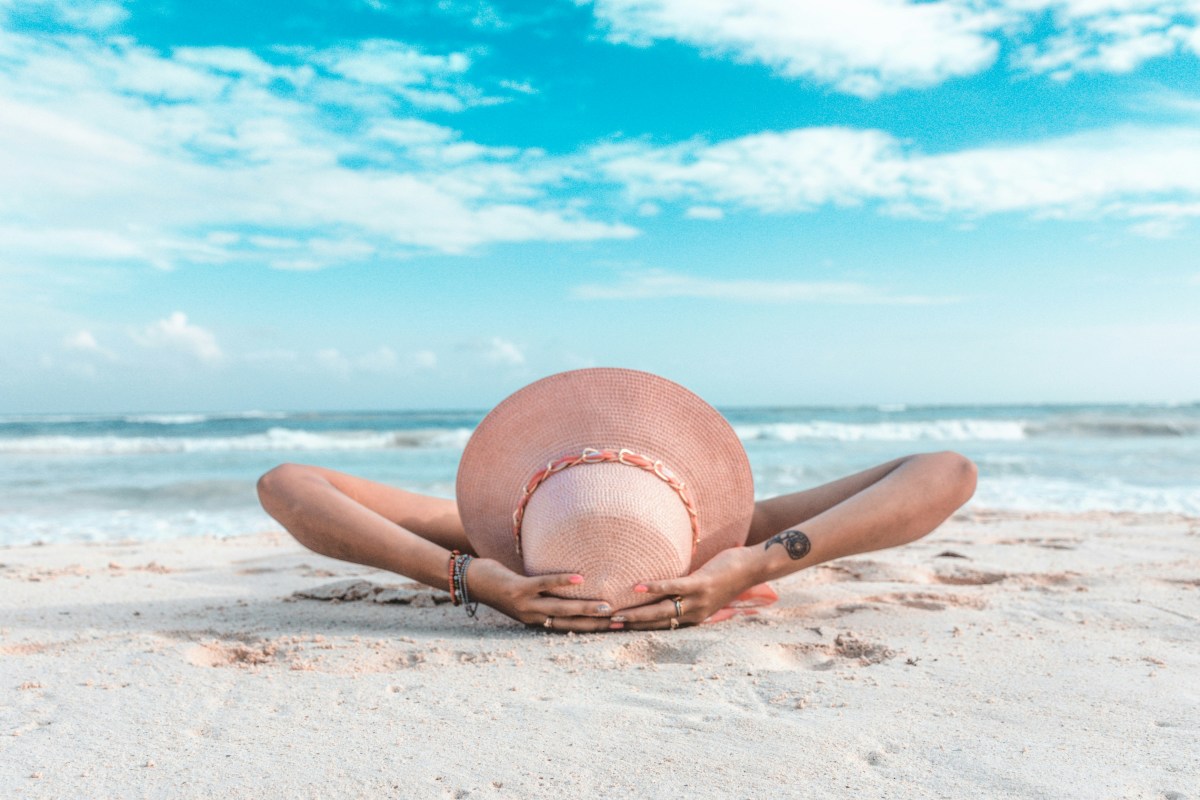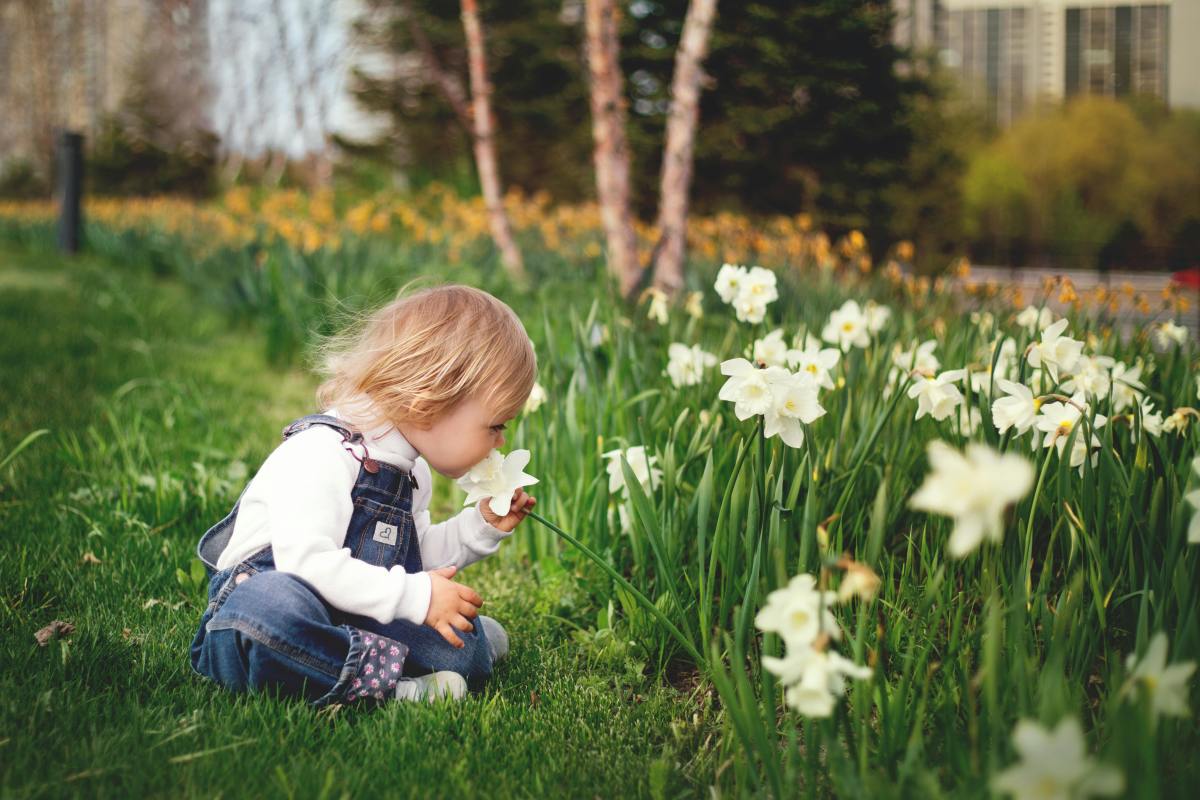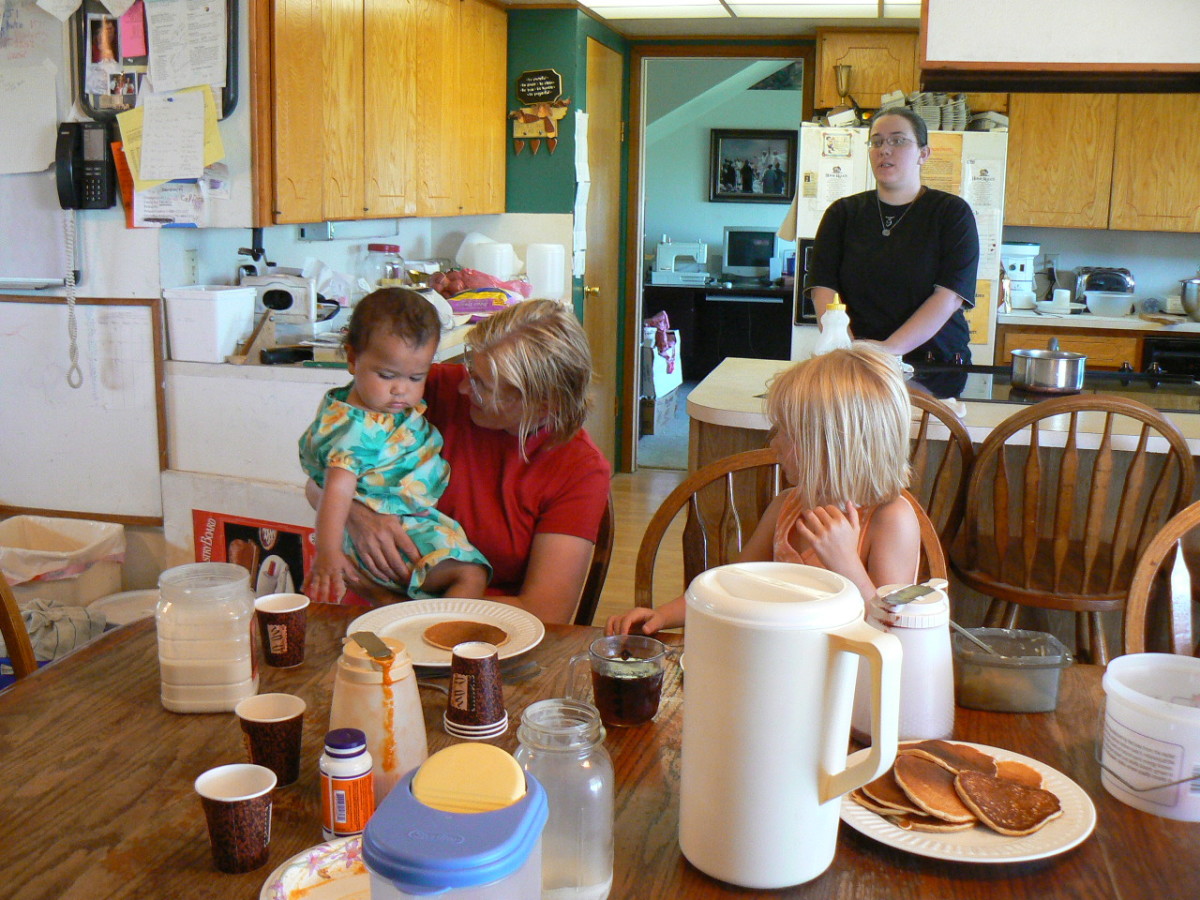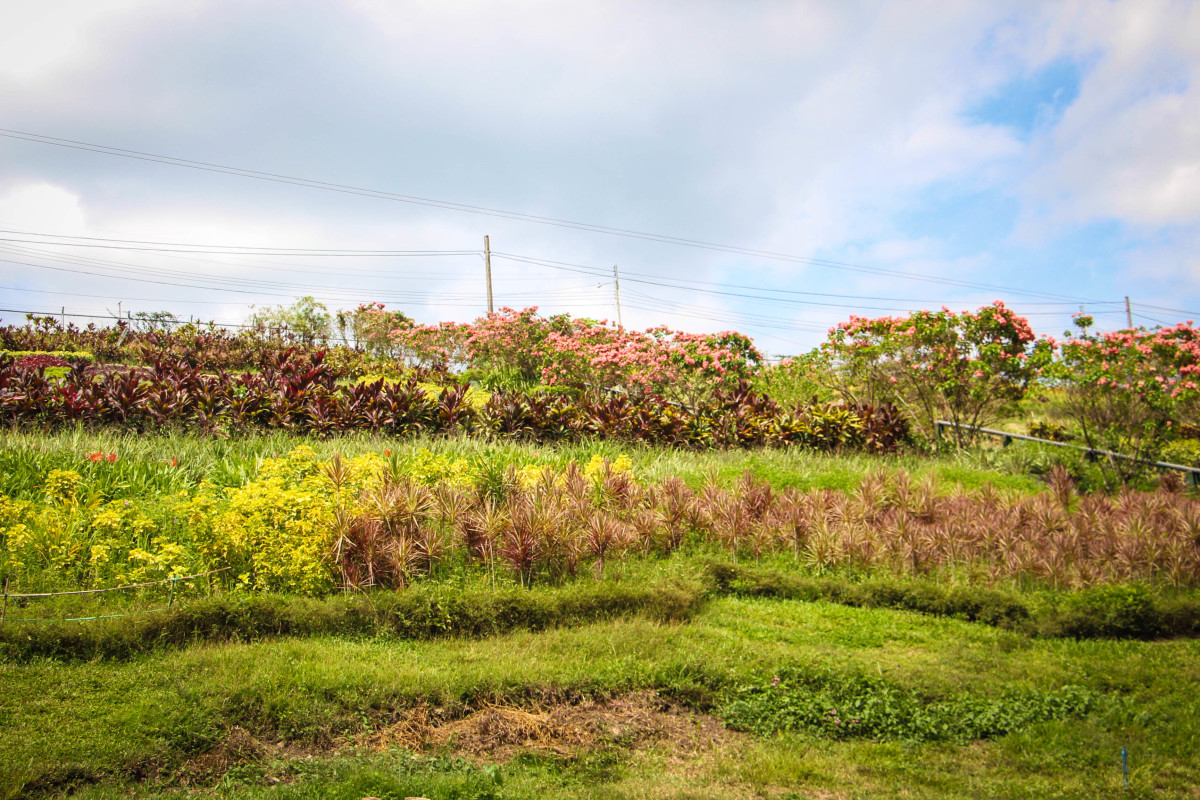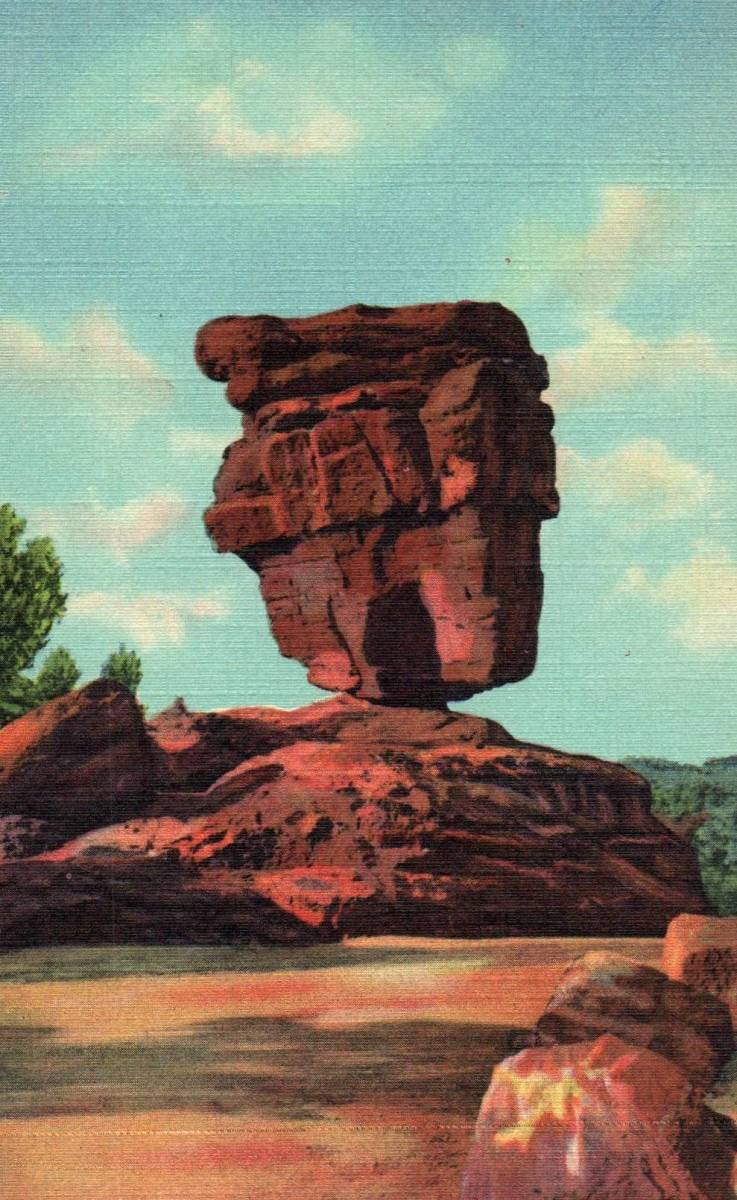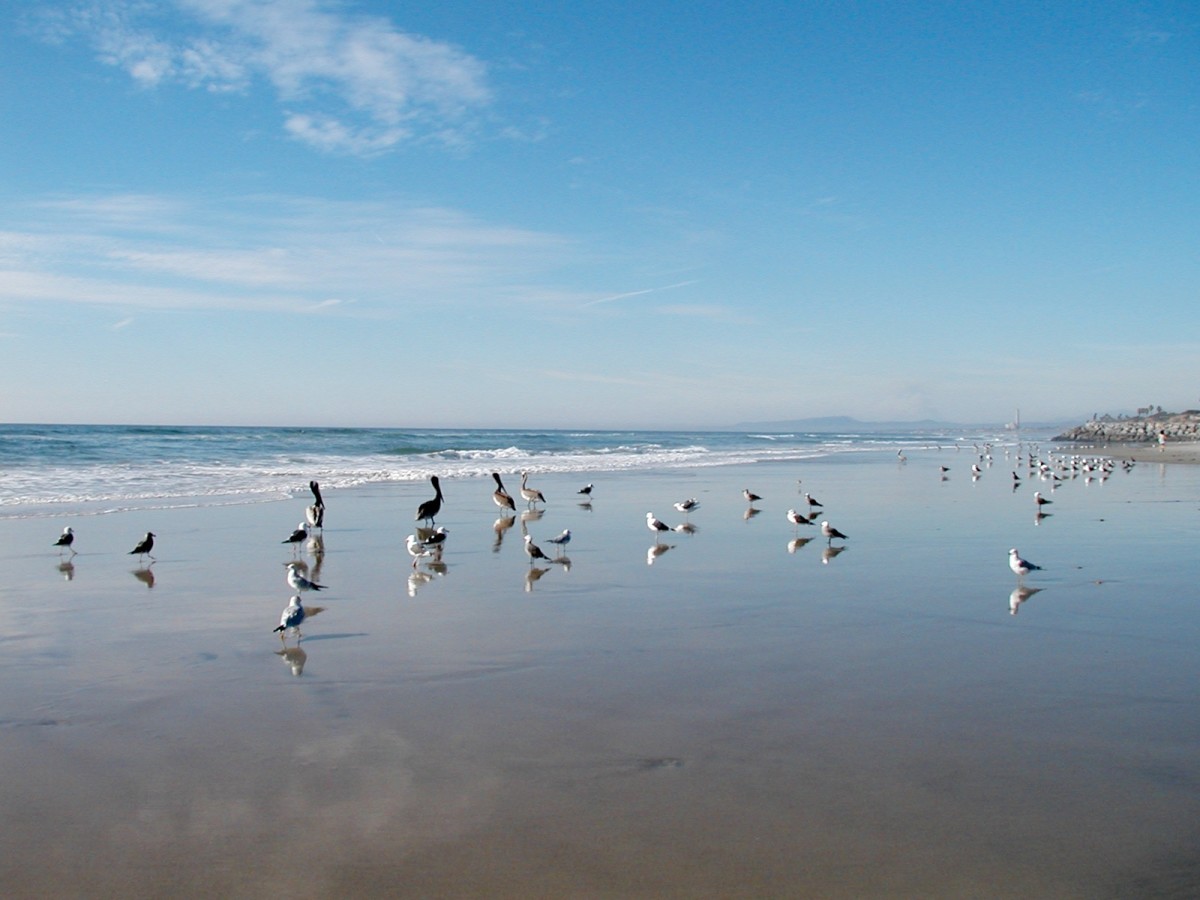Fun Beach Activities and Games For Children
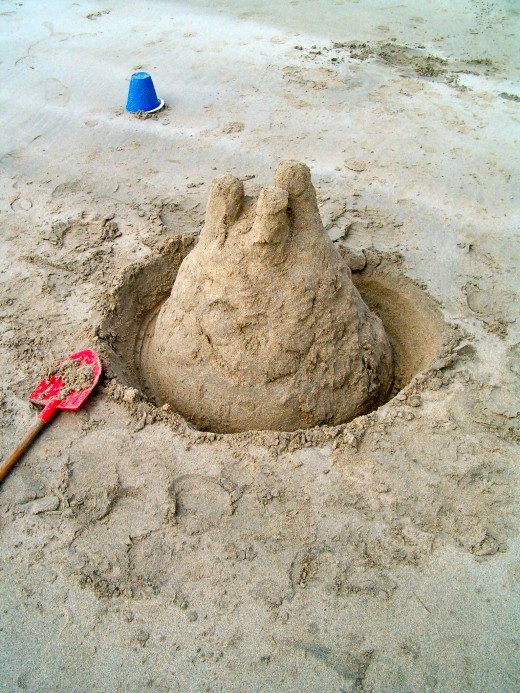
Activities From Toddler to Teenagers
Sometimes we adults forget how to build castles or dig holes in the sand, and it’s only when we become parents that we remember. The first time I tried to build a sandcastle when my children were toddlers, I was as surprised as they were when we turned the pail over and the sand stayed inside it!
If that's you too, then this article will help you rediscover your playful self. If sand castles aren't your thing, one of the other activities will waken the child in you.
Home-educating parents and teachers will be pleased to know I have arranged the activities into curriculum groups. Children of all ages can play and learn at the same time!
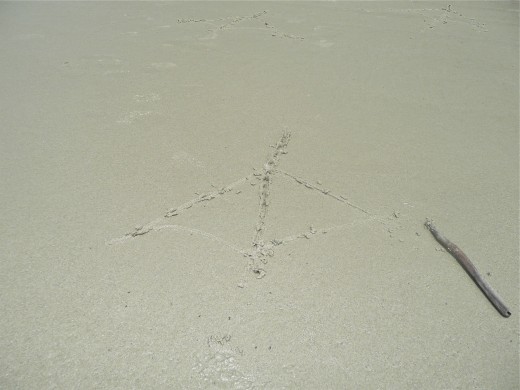
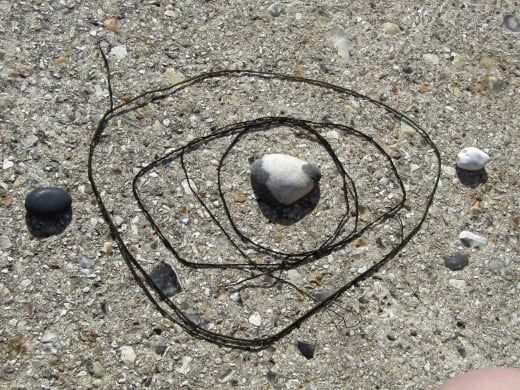
Art activities
Most art activities can be fun for all the family, from toddler to teenager and beyond.
- Drawing in the sand.
All you need to draw in the sand is a stick and imagination. If you have no stick, your hands will do. In the first photo opposite our daughters had enjoyed creating footprints for a giant bird.
- Making pictures with objects found on the beach
The pictures you create won’t be permanent, but you can photograph them, like we did, and have a permanent reminder of the fun you had creating your designs.
You can of course combine both these first two activities into drawings in the sand that also include objects. Draw people and give them seaweed hair, pebble eyes, razor shell mouths and cockleshell noses. (Or any combination you like!)
Sand castles can be simple or true sculptures
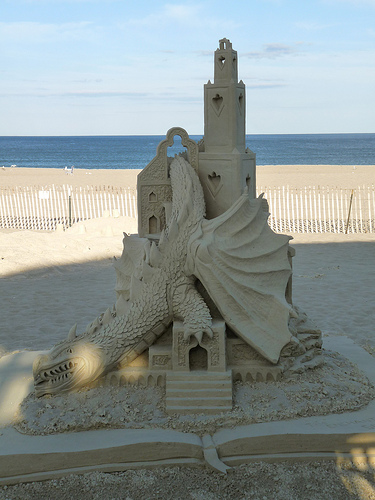
- Building castles
Sand castles can be as simple, like the one in the top photo or elaborate like the one opposite. Sand sculpting has become a popular pastime with contests all over the world; so older children need not feel self conscious about this pastime. Toddlers love to fill buckets or molds and see them form in to shapes.
- The science of sand castles
Although this activity definitely counts as art, there is science involved in sand castle building! The perfect sand grains are angular rather than rounded, and are fine rather than coarse. The perfect consistency is not too wet or too dry. If you stay above the high-tide mark, but dig down you should get damp sand that is perfection itself. And don’t save castle building for sunny days – the perfect weather condition is overcast because then the sand doesn’t dry out too quickly.
- Collecting shells for use in art projects at home
You can find pretty shells to use in pictures at home or to decorate frames.
- Drawing
You can of course take your art materials along and draw. I recommend oil pastels andingres paper for great a great beach feel.
Some wildlife found in rock pools
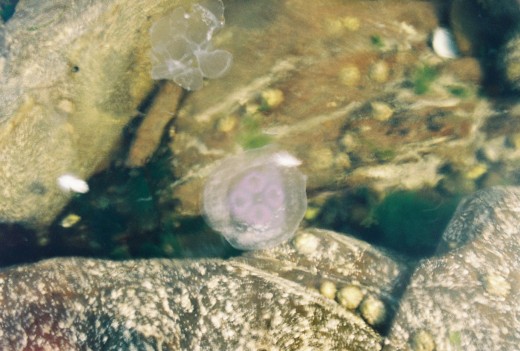
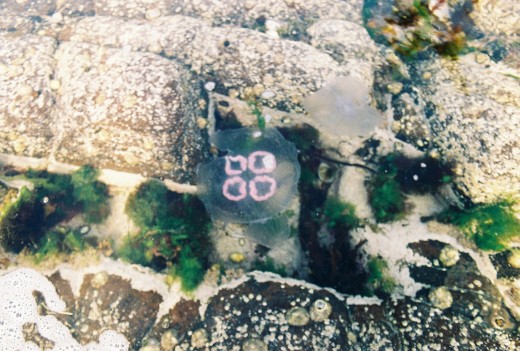
Not digging to Australia, but digging in Australia and making a river
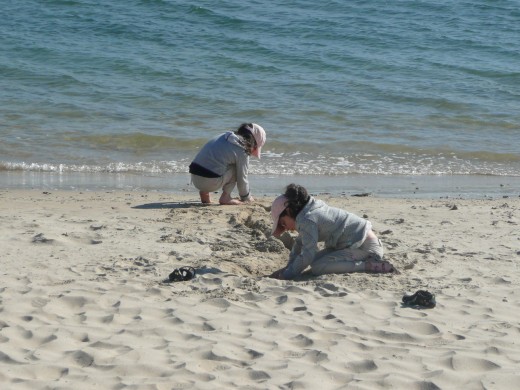
Science and Geology
These activities will appeal to children from toddler to teenager, although younger children will need close supervision.
- Exploring Rock pools
Rock pools are found between the high and low tide levels. Animals and plants found there must be able to survive being left behind when the tide goes out. You are likely to find small fish and crabs, shellfish and seaweed. Take along a seashore guide to help you identify the wildlife and plants you find there, but do not take home the wildlife as it will not survive in your garden pond or in a bucket.
- Building dams
If there is a small stream anywhere on the beach you can play at making dams. This was one of my favourite beach games as a child. Be sure to dismantle your dam before you leave.
- Digging holes
Children love digging and as well as enjoying digging to Australia (at least in the Northern Hemisphere) they are fascinated to discover that if they dig down into the sand they will find water. Actually, it’s not just kids are fascinated: count me in!
Your child’s fascination is a great opportunity for a geography lesson about thewatertable. The water table is the highest level at which you find water, and on a beach itislevel with the sea. (So the further down the beach you dig, the less digging you needtodo.) A quick lesson for you, so you can answer the inevitable question: Why is therewater under the sand?
It’s there because the ground is leaky and the water seeps in. It then can’t get out again until someone digs down and finds it. (For a more detailed explanation check out the Wikipedia link at the end of this article.)
If you dig a hole on the beach, don’t leave it unattended and when you leave be sure to fill it back in so people and animals don’t fall in. Some beaches have rules that you cannot dig deeper than knee height, so do check first.
- Making “rivers”
If there is no stream on the beach (or even if there is) you can make your own river. Near the shoreline dig a small hole until you find water and then keep digging, but instead of going down, go along to the shore.
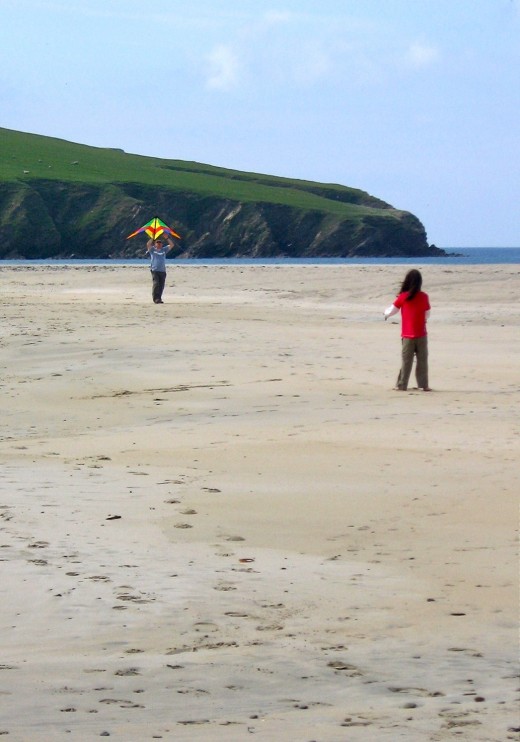
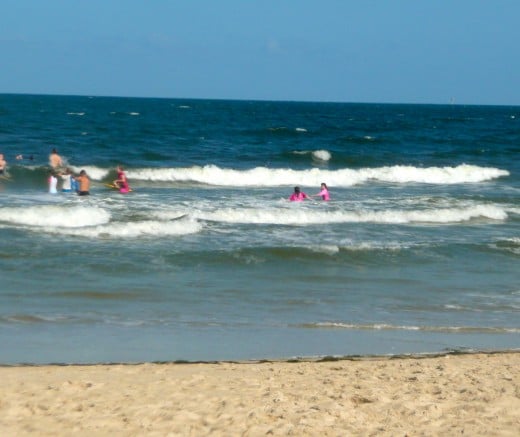
Sports activities and games
Sports that need no equipment
- Running races
Running is easiest on the damp sand below the high tide line.
- Long jump
Draw a starting line in the sand and see how far you can jump – that’s all there is to it!
- Jumping waves
Toddlers love to stand with you by the shoreline and jump approaching waves, and they are fascinated to discover that some waves are bigger than others. (Half the fun is running away from the big ones.) Older kids who can swim and adults can have just as much fun jumping waves further out. The photo on the right is at Caloundra in Australia, where the sea was thick with people jumping the rolling waves. The two in pink are my kids, and I was somewhere under the waves at that time! Just remember: you’re never too old or too sophisticated to jump waves!
- Sports activities that use cheap equipment and that don’t require specialist training
The first two activities can be done by anyone from toddler up.
- Kite flying
Beaches are great places to fly kites because there is usually a breeze and plenty o fopen space. Make sure to fly your kite well away from other people, and toddlers will probably need some help with this!
- Ball games
The list of ball games you can play on a beach is almost endless. A few examples are: a simple game of throw and catch, football, volleyball or cricket.
The next two activities should only be done by strong swimmers.
Body Boarding for kids and professionals
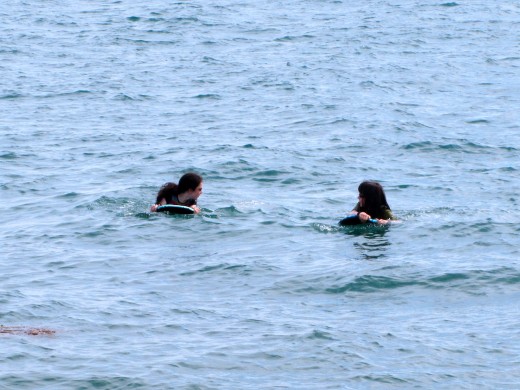
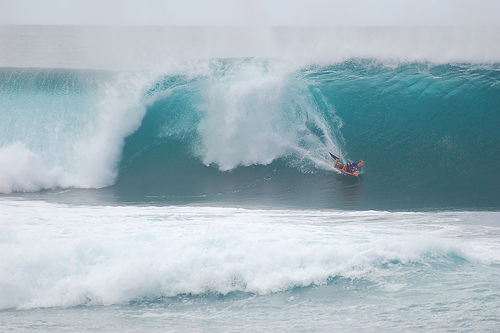
- Body boarding
This is probably my kids’ favourite thing to do at the beach. It’s possible to buy cheap polystyrene body boards on most sea fronts, and for in calm conditions a body board can be used as a float or to skim over a few gentle waves. If you want to reach professional levels or to tackle big waves, then you will need lessons.
- Snorkelling
Snorkelling equipment is inexpensive and anyone who is a competent swimmer can do it, although it is useful to get a short lesson first if these are available. To avoid getting water in your mask, make sure it fits properly – to test this place it on your face and breathe in. It should stay on without you holding it while you breathe in. If it doesn’t it’s not a good fit. (If air can get in, so can water.) Practice breathing through the tube before going in the water, and get kids to practice in a bath or shallow pool before you try them in the sea. Snorkels with a one-way valve that empties out water are slightly more expensive, but I think they are well worth it. For more details on how to snorkel see the video.
Watch How to Snorkel on Youtube
Wind and Kite surfing
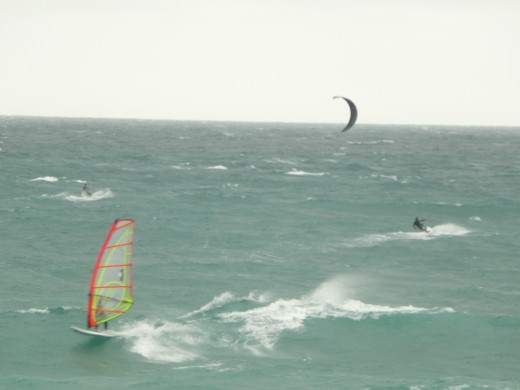
Learning to surf, with an instructor close at hand
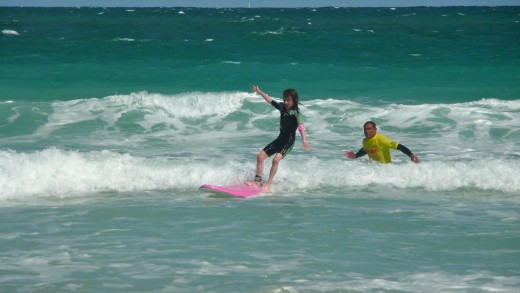
Seashore guides and toys available on Amazon

Sports activities that require lessons from a trained instructor
- Windsurfing and kitesurfing.
Unlike surfing, you don’t need huge waves to windsurf – all you need is wind and sea. According the Guardian newspaper, some top UK spots for windsurfing are: Poole andWeymouth in Dorset, Shoreham and West Wittering in West Sussex, Gwithian Beach in Cornwall and the Island of Tiree in the Hebrides. Some top spots in the USA are: Merrit Isand in Florida, Outer Banks in North Carolina, San Francisco and Lake Michigan. Kitesurfing (or kite boarding ) is a much newer sport than wind surfing and more dangerous. In windsurfing the sail is attached to a board that catches the wind and propels you along. In kite surfing you hold onto a kite, and if you fall off the kite keeps going so you are more likely to run into difficulties. Do not attempt this without proper training first.
- Surfing
Surfing can be great fun – or so my kids tell me – but if you want to try it get lessons first. A reputable teacher will come into the water with you, as in the photo of our daughter’s lesson on the right.
Further reading
Marine Science has some great examples of wildlife and seaweeds found on sandy beaches
Wikipedia explains all about underground water in an article on Aquifers
Equipment needed and who can do it.
Activity
| Equipment needed
| Suitable for all the family
|
|---|---|---|
Drawing in sand
| none
| yes
|
Making pictures with found objects
| just the objects
| yes - with supervision
|
Building castle
| bucket and spade or molds
| yes
|
Collecting shells
| none
| not suitable for very young children unless closely supervised
|
Drawing
| drawing pad and pencils or pastels
| anyone, but best suited to older kids
|
Exploring rock pools
| none
| from around age 3
|
Building dams
| none
| from around age 3
|
Making rivers
| none
| yes
|
Running race
| none
| yes if they can walk
|
Long jump
| none
| yes (as above)
|
Jumping waves
| none
| from toddler (with supervision)
|
Kite flying
| a kite
| from toddler (with supervision)
|
Ball games
| ball
| from toddler
|
Body boarding
| body board
| only strong swimmers
|
Snorkelling
| snorkel and fins
| swimmers only
|
Windsurfing
| windsurf board and possibly wet suit
| only for swimmers and with training (best suited to older children)
|
Surfing
| surfboard and wetsuit
| strong swimmers only
|

